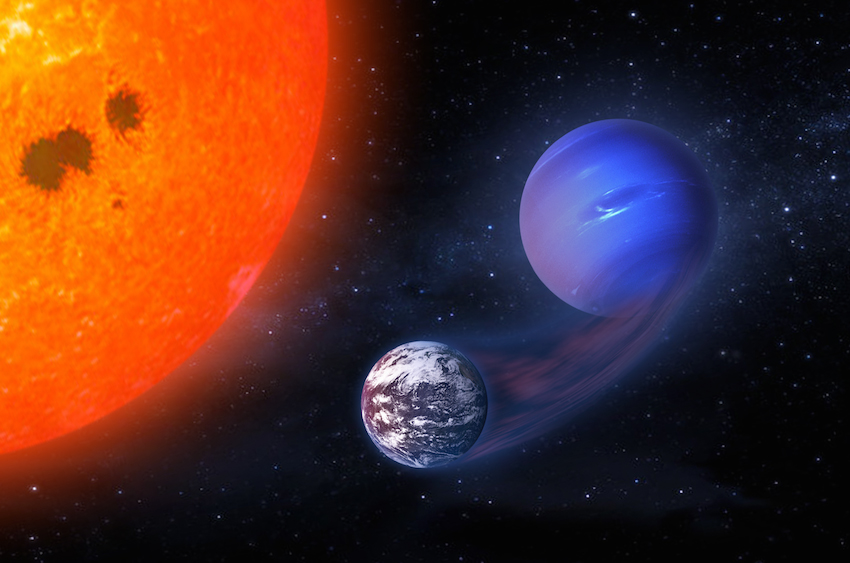Gas giants can transform into potentially habitable planets

At present, scientists consider potentially inhabitable planets those where liquid water is possible. Such a planet should be at a certain distance from its luminary, in the "green zone", where it is not too cold and not too hot. However, most of these planets, according to scientists, should have a solid core, and not be gaseous.
According to the new theory that Rodrigo Luger and Rory Barnes put forward (their work was published in the authoritative Astrobiology), potentially habitable, earth-like planets can form out of “mini-Neptunes”. This term scientists call the large planets, which are at a considerable distance from the star, with a massive hydrogen atmosphere and a solid core.
The transformation process is possible under the observance of several conditions, the main of which is the presence in the system of a star with low mass (red dwarf). Additional necessary conditions are strong tidal effects with significant stellar activity. Under the condition of the existence of a “mini-Neptune” in such a system, strong tidal forces will act on the planet, thanks to which the planet can gradually approach the star.
')
The activity of the star, with large-scale high-energy radiation (X-ray and ultraviolet) can lead to the loss by the planet of most of its atmosphere. Approaching the star, the planet gradually heats up, and the frozen water in the bowels begins to melt, and as a result, liquid water appears on the surface, which then appears in the atmosphere.
In addition, the “mini-Neptune” should also have a rocky core, which is formed in the early stages of the development of planets of this type. True, for the formation of such a nucleus helium and hydrogen must leave the planet’s atmosphere at a certain speed. If the rate of escape of helium and hydrogen is too slow, then the planet will have a very small core. If the rate of removal of such gases is too high, the liquid water will simply evaporate from the surface.

Potentially habitable zone
By the way, the other day another interesting work of astronomers was published, in which it is suggested that there exist hundreds of billions of Earth-like planets only in the Milky Way.
Source: https://habr.com/ru/post/366129/
All Articles